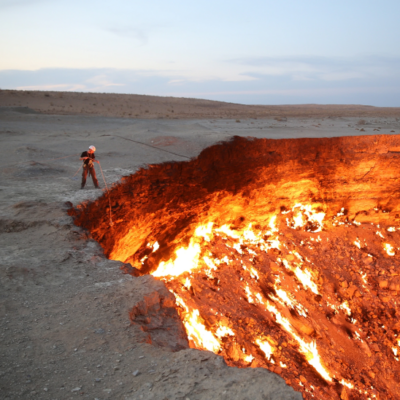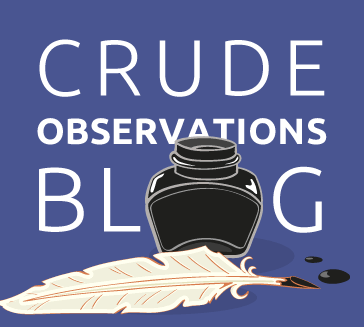Sadly for the blogging world, I seem to have run out of time this week to do anything spectacular plus I need to rest up my creative energies so that I can do the sprint to the end of the year in peak condition. You may not know it yet but some of the best material is coming for you including, maybe, an Advent Calendar, a movie ranking, a naughty or nice list and not least a kick-ass Christmas Eve poem.
Of course in this calm before the storm I need to find some filler and, as it turns out, I have just the thing. It seems that every once in a while, I will realize that I have spent way too much time complaining about pipelines, inflation, oil prices, Trudeau, the end of free money and the impending “End of Big Oil because of Electric Vehicles”. And it’s on those days that my attention turns to oil and coal’s neglected stepsister who we know as natural gas. And out of respect for American Thanksgiving, I would like to say that I, for one, am thankful for natural gas. Even if I am embarrassed to say I am long natural gas stocks as prices limp along at $3 an MCF and producers do what they do best – over-produce.
Like oil, natural gas is a prolific fossil fuel with many uses, however I feel that it floats unnoticed under the radar particularly because it is so much easier to carpet bomb oil and coal into submission in the great anti-fossil fuel war of attrition. That said, with natural gas being promoted as the ideal energy transition bridge fuel, it does attract its fair share of attention – both good and bad.
So herewith – 50 (or is it 53?) things to know, love, think and am thankful for about natural gas, in no particular order of importance and apologies if I miss some obvious ones.
- Natural gas is used to provide heat, hot water and cooktop fuel to almost 80 million homes in North America
- Natural gas represents almost 25% of all primary energy use in North America and globally, rapidly closing the gap on coal
- It is cleaner burning than all the other combustible fuel alternatives such as whale blubber, wood, peat, coal, rolled-up newspapers and oil.
- It is so plentiful in North America that supplies are estimated at anywhere from 50 to 100 years at current consumption levels, although this might involve fracking under Philadelphia, so maybe not. Canadian supplies are somewhere in the 300 year range.
- It is cleaner, cheaper and easier to drill for than oil and wells require less maintenance after being brought online.
- It is easier to gather, process and subsequently ship and you never have to worry about spills. Sure it can blow up but that’s rare.
- No one has ever compared a gas drilling operation to Mordor.
- Natural gas pipelines are rarely protested the way oil ones are, unless you live in New York, then you are full on NIMBY about anything that involves digging up your property
- It can be compressed and liquefied for export.
- When prices are on, gas is a cash cow. Back in the Alberta energy heydays, royalties from natural gas pretty much paid for our health care system.
- Aside from heating our homes, natural gas is used to make plastic, fertilizer, generate electrical power. It is also used in vinyl, aspirin (not sure how) and pretty much as many products as oil.
- It also smells like rotten eggs. Actually it doesn’t – it is odourless, the smell is added.
- Natural gas reserves in British Columbia are so vast that more than 20 LNG projects were proposed for the West Coast. Just because government policies and dithering scared a bunch away doesn’t mean the potential isn’t there. Three projects are currently advancing.
- Gas keeps it real – While “shale gas” is an actual real thing (gas comes from the shale), “shale oil” is just an expression, it’s really “tight oil” – go figure. Just close the loop – oil from shale is an actual thing. Confused yet? Stop smelling the gas.
- In many cases when you are drilling for oil, associated gas is produced. The reverse isn’t always true.
- When excess gas is produced, it is often flared because gas isn’t considered as valuable as oil.
- In the Permian, the amount of gas being produced is overwhelming the take-away capacity and with new rules on venting and flaring, wells are actually being shut in to work off the excess gas
- The US produces about 105 billion cubic feet of gas a day. That’s a lot of gas.
- Close to 3,700 BCF of gas is in storage in the US, which is about 33 days of demand, compared to the oil storage days supply of about 27 days.
- Gas usage is a seasonal business – in winter storage levels are drawn down (for heating) and in summer months (injection season), stocks are rebuilt. Stocks can swing as much as 2,000 Bcf
- In the last few years, natural gas has supplanted coal as the number one fuel source for electricity in the United States
- The US is a net exporter of natural gas – sending gas to Mexico, Canada, Europe and elsewhere.
- Pipelines to Mexico provide an ever-increasing source of demand as their power sector shifts from coal (and they build LNG export facilities) and are expected to account for 14 Bcf/day of exports in the next few years if all projects come to fruition
- Similarly, current LNG export capacity in the US is about 14 Bcf/day and is expected to grow by between 3 and 6 Bcf/day in the next few years.
- Combined, this new export capacity ultimately represents about 20% of US production, so new supplies are going to be needed to keep the system in balance.
- Since 2010, US production of conventional gas has been in terminal decline. Shale gas from places like the Eagle Ford, the Barnett, the Permian, Marcellus and other shale basins have been key to maintaining supply
- The most prolific region is by far the Marcellus shale in the Pennsylvania Appalachian region which accounts for a whopping 30 Bcf/day of production or just under 25% of all US gas
- In January of 2000, shale gas accounted for 2 Bcf/day of production and by October 2023 that number was 85 Bcf/day or 80% of production
- In the 2000’s, the US was facing a critical shortage of natural gas and started building LNG receiving facilities.
- The largest (and first to export) LNG facility in the US, which exports 3 Bcf/day via four “trains” was originally built to receive imports
- There are close to 3 million miles of natural gas distribution and transmission pipelines in North America – enough to go to the moon and back, six times
- Natural gas emits about 50% of the CO2 as coal for comparable amounts of electricity generation. What does this mean? Simple, it means that if we could replace all the coal generation in China, India and the United States with gas fired generation, we would be well on our way to meeting our global climate goals and all those annoying conferences and doom and gloomers could end.
- By replacing coal with gas and renewables, the UK was able to reduce emissions to Victorian era levels.
- The US has the 4th highest proven reserves of natural gas in the world, behind Russia, Iran and Qatar. Canada ranks 17th, but this doesn’t include vast reserves in the northern part of British Columbia. Interestingly, Australia, which has about half the reserves as Canada and ranks a paltry 26th has a thriving LNG industry.
- More than 15 million vehicles worldwide run on natural gas – both compressed and liquefied. Take that Tesla.
- Gas was first discovered in the Middle East when seepages were ignited by lightning strikes.
- Natural gas was used in 500 BC China, gas was moved via bamboo pipeline and used to make evaporated salt brine from sea water
- The first lamp to be lit by natural gas was in 1792 in the UK
- Natural gas is referred to a “dry” or “wet”. Dry gas is almost entirely methane. Wet gas is less than 85% methane and contains other gases such as ethane, butane, propane and naptha.
- 90% of chefs prefer to cook with natural gas. It evenly distributes heat which means evenly cooked food.
- The Temple of Apollo, known as the Oracle of Delphi, was built over a flaming gas vent
- Home use of natural gas premiered in the first century AD in Persia, when ground seepage was ignited next to the royal kitchen
- Eclipse Resources, a Marcellus/Utica pure play driller broke its own record for drilling the longest land-based lateral well in the world by drilling a Utica well with a lateral that’s 19,300 feet long (3.7 miles)
- Remember in the movie Gasland, when someone lit their tap water on fire and blamed fracking? Apparently this is common in areas where shallow gas and underground aquifers co-exist. Go figure.
- As recently as 2008, the Alberta government received close to $5 billion in royalties from natural gas. By 2014 that number had been reduced by 90%. In 2022/2023, when gas prices jumped because of the Russia invasion of Ukraine, royalties jumped to $3.6 billion. Alberta loves gas.
- Cooling natural gas to -162 Celsius converts it to a liquid that can then be shipped worldwide, provided there is a business case to do so
- Because natural gas markets tend to be continental instead of global (like oil), prices vary considerably around the globe, hence the push for the big reserve holders to LNG for export
- The flaring of gas from oilfields in the Middle East is visible from space
- The first natural gas well drilled in Alberta was in 1883 in Medicine Hat, otherwise known as “Gas City”. The first gas well in Canada was in New Brunswick in 1859.
- Now gas wells are scientifically mapped out by millennial nerds wearing UGG slippers and Lululemon dress pants in their work from home basement offices lined with Tom Brady posters, safely thousands of kilometres from any actual drillsite.
- There is a movement afoot where climate warriors are trying to rename natural gas as “fossil gas”. Don’t fall for it. They are trying to use the negative vibes associated with “fossil fuels” to stigmatize gas in the minds of unsuspecting consumers and in theory save the planet. Natural gas is not a fossil fuel. It’s a gas. That’s trapped underground. Due to naturally occurring events. Not fossils. The only other term you are allowed to use is natty.
- There is an open pit in Turkmenistan that has been on fire since 1971 and is called the “Gates of Hell”. Legend has it that it was a Soviet drill site and the rig fell through the bottom of the crater and gas started leaking so the Soviets lit it on fire to flare for a bit and then remediate it a few days later. Hmm.
- 68% of Canada’s natural gas production comes from Alberta
- The now abandoned Energy East pipeline project was to have been built by repurposing a TransCanada owned natural gas pipeline. If demand or price was to pick up, perhaps we can convince TransCanada to repurpose the repurposing
- Coalbed methane is natural gas found in coal seams. There may be up to 500 trillion cubic feet of coalbed methane in Alberta which is an absurdly massive amount, although not all of this will be recoverable.
- Bonus Item – there is a book about natural gas called “The Prize”. No, actually there isn’t. That one’s about oil. But one of the top sellers on Amazon about natural gas is called the “Handbook of Natural Gas Transmission and Processing: Principles and Practices”. I hear it’s a real page turner.
So that’s it, it’s a gas, gas, gas.
Didn’t think I could do 50, so I’m glad I got a little further.
Happy Thanksgiving a day late to all my American readers.









